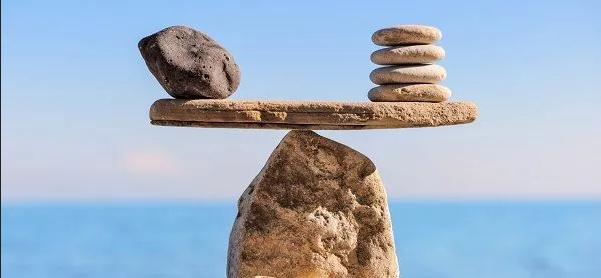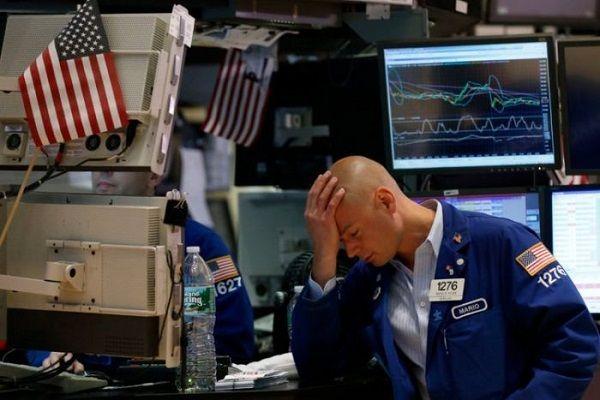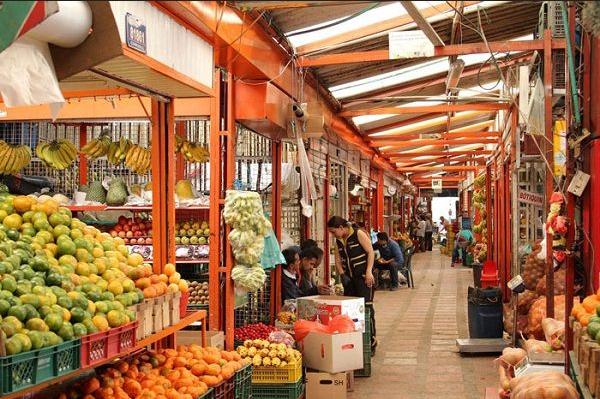The balance of payments (BOP) is a statement of all transactions made between entities in a country and the rest of the world, over a defined period of time, such as a quarter or a year.
The balance of payments (BOP) is the method that countries use to monitor all international monetary transactions in a specific period of time. Typically, the BOP is calculated every quarter and every calendar year. All transactions made by the public and private sectors are tallied in the BOP to determine how much money enters and leaves a country. If a country has received money, this is known as a credit, and if a country has paid or given money, the transaction is counted as a debit.
Theoretically, the BDP should be zero, meaning that assets (credits) and liabilities (debits) should balance, but in practice this is rarely the case. Therefore, the BOP can tell the observer whether a country has a deficit or a surplus and from which part of the economy the discrepancies arise.
Understanding the concept
The balance of payments, also known as the international balance of payments, summarizes all the transactions that government bodies, individuals and companies carry out with government bodies, individuals and companies outside the country. These transactions consist of transfers – such as remittances and international aid, services and capital, as well as exports and imports of products.
The balance of payments divides transactions into two accounts: the current account and the capital account. Sometimes the capital account is called the financial account, with a, usually very small, capital account listed separately. The current account includes transactions in goods and services, investment income, and current transfers. The capital account , broadly defined, includes transactions in financial instruments and central bank reserves. Briefly defined, it includes only transactions in financial instruments. The current account is included in transactions such as national production, while the capital account is not.
The sum of all transactions recorded in the balance of payments must be zero, provided that the capital account is broadly defined. The reason for this is that each credit that appears in the current account has a corresponding debit in the capital account, and vice versa. If a country exports a product (a current account credit), it effectively imports foreign capital when that item is paid for (a capital account debit).
If a country cannot finance its imports through capital exports, it must do so by depleting its reserves. This situation is often known as a balance of payments deficit, using the narrow definition of capital account that excludes central bank reserves. However, in reality, in broadly defined terms the balance of payments must sum to zero by definition. In practice, statistical discrepancies arise due to the difficulty of measuring every transaction between an economy and the rest of the world.
Importance of balance of payments
A balance of payments is an essential document in the department or transaction of finance, as it provides detailed information on the state of a country and its economy. The importance of the balance of payments can be calculated from the following points:
- Examines the transaction of all exports and imports of goods and services during a given period.
- It helps the government analyze the potential for particular growth in the industry’s exports and formulate policies to support that growth.
- It gives the government a broad perspective on a different range of import and export tariffs. The government then takes steps to increase and decrease the tax to discourage import and encourage export, respectively, and be self-sufficient.
- If the economy asks for support from the import side, the government plans according to the balance of payments and diverts cash flow and technology to the disadvantaged sector of the economy, and looks for future growth.
- The Balance of Payments also indicates that the government must detect the state of the economy, and plan expansion, monetary and fiscal policy, and act on them.
Structure and components of the Balance of Payments
The Balance of Payments is divided into three main categories: the current account, the capital account and the financial account. Within these three categories there are subdivisions, each representing a different type of international monetary transaction.
The current account
The current account is used to mark the entry and exit of goods and services in a country. Income from investments, both public and private, is also paid into the current account.
Within the current account there are credits and debits in merchandise trade, which includes goods such as raw materials and manufactured products that are bought, sold or given away (possibly in the form of aid). The services refer to receipts from tourism, transportation (such as the fee that must be paid in Egypt when a ship passes through the Suez Canal), engineering, fees for commercial services (for lawyers or management consulting, for example) and royalties from patents and copyrights. . When combined, goods and services together form a country’s balance of trade (BC). The Balance of Trade is typically the largest part of a country’s balance of payments, as it represents total imports and exports. If a country has a deficit in the balance of trade, it imports more than it exports, and if it has a surplus in the balance of trade, it exports more than it imports.
Income from income-producing assets such as stocks (in the form of dividends) is also recorded in the checking account. The last component of the current account is unilateral transfers. These are credits that are mainly workers’ remittances, which are wages sent back to the home country of a citizen working abroad, as well as foreign aid that is received directly.
The capital account
The capital account is where all international capital transfers are recorded. This refers to the acquisition or disposal of non-financial assets (for example, a physical asset such as land) and non-produced assets, which are necessary for production but have not been produced, such as a mine used for diamond extraction.
The capital account is broken down into monetary flows resulting from debt forgiveness, the transfer of goods and financial assets by migrants leaving or entering a country, the transfer of ownership of fixed assets (assets such as the equipment used in the production process to generate income), the transfer of funds received for the sale or acquisition of fixed assets, gift and inheritance taxes, death liens and, finally, uninsured damage to fixed assets.
The financial account
In the financial account, international monetary flows related to investment in businesses, real estate, bonds, and stocks are documented. Also included are government-owned assets such as foreign reserves, gold, special drawing rights (SDRs) held with the International Monetary Fund (IMF), private assets abroad, and foreign direct investment. Assets owned by foreigners, private and official, are also recorded in the financial account.
Balance of payments and balance of trade
The balance of trade (also known as the current account , detailed above) is included in the balance of payments.
A trade surplus is more favorable for domestic producers responsible for exports. However, this is also likely to be unfavorable to domestic consumers of exports who pay higher prices.
Alternatively, a deficit in the balance of trade is more unfavorable to domestic producers in competition with imports, but may also be favorable to domestic consumers of exports who pay lower prices.
The balance sheet
The current account must be balanced with the combined capital and financial accounts ; however, as mentioned above, this rarely happens. We must also keep in mind that with fluctuating exchange rates, the change in the value of money can increase balance of payments discrepancies.
If a country has a fixed asset abroad, this borrowed amount is marked as a capital account outflow. However, the sale of that fixed asset would be considered a checking account entry (investment gains). The current account deficit would be financed in this way. When a country has a current account deficit that is financed by the capital account, the country actually gives up capital assets for more goods and services. If a country is borrowing money to finance its current account deficit, this would appear as an inflow of foreign capital in the balance of payments.
Liberalization of balance of payments accounts
The increase in global financial transactions and trade in the late 20th century stimulated balance of payments and macroeconomic liberalization in many developing countries.
With the advent of the emerging market economic boom, in which capital flows to these markets tripled from USD$50 million to $150 million from the late 1980s until the Asian crisis, countries in development to lift restrictions on financial and capital account transactions to take advantage of these capital inflows. Many of these countries had restrictive macroeconomic policies, so regulations prevented foreign ownership of financial and non-financial assets. The regulations also limited the transfer of funds abroad.
With capital and financial account liberalization, capital markets began to grow, not only allowing a more transparent and sophisticated market for investors, but also giving rise to foreign direct investment (FDI). For example, investments in the form of a new power plant would bring a country greater exposure to new technologies and efficiency, eventually increasing the nation’s overall gross domestic product (GDP) by enabling greater production volumes. Liberalization can also facilitate lower risk by allowing greater diversification across various markets.
Economic policy
The balance of payments and information on the international investment position are key elements in formulating national and international economic policy. Certain aspects of balance of payments information, such as payments imbalances and foreign direct investment, are key elements that a nation’s policymakers seek to manage.
Economic policies are frequently directed at achieving certain objectives that, as a result, affect the balance of payments. For example, one country might adopt policies specifically designed to attract foreign investment into a particular sector, while another policy might attempt to keep the currency at an artificially low level to stimulate exports and build up international reserves. The impact of these policies is ultimately recorded in balance of payments information.
Imbalances between nations
While a nation’s balance of payments must necessarily be zero in the capital accounts and current accounts, imbalances can appear between different nations’ current accounts. According to the World Bank, the United States had the largest current account deficit in the world in 2017, at $462 billion, while Germany had the largest surplus, at $296 billion.
Such imbalances can generate tensions between countries: Donald Trump campaigned for the presidency of the United States in 2016 on a promise to reduce the country’s trade deficits, especially with Mexico and China. The Economist Magazine argued in 2017 that the German surplus “puts unreasonable strain on the international trading system.” given that “to offset such surpluses and sustain enough aggregate demand to keep people working, the rest of the world must borrow and spend at the same level as these German surpluses.
History of the balance of payments
Before the 19th century, international transactions were denominated in gold, providing little flexibility for countries experiencing trade deficits. Growth was low, so stimulating trade surpluses was the first method for nations to strengthen their international financial position. National economies were not well integrated with each other, yet large trade imbalances rarely caused crises. The first industrial revolution increased international economic integration, and balance of payments crises began to occur more frequently.
The Great Depression led countries to abandon the gold standard, but the Bretton Woods system that remained until the 1970s introduced the dollar standard with gold convertibility, with fixed exchange rates for other currencies. However, as the US money supply increased and its trade deficit deepened, the US government found itself unable to exchange its international reserves for gold, and the system was abandoned.
Since the Nixon Shock, the abandonment of the dollar standard, which ended the convertibility of the dollar to gold, currencies float freely, meaning that a country experiencing a trade deficit can – artificially – depreciate its currency, accumulating international reserves, for example, thus making their products more attractive in the international market and increasing their exports. Due to the increasing mobility of capital across borders, balance of payments crises sometimes occur, causing sharp currency devaluations, such as that which hit Southeast Asian countries in 1998.











